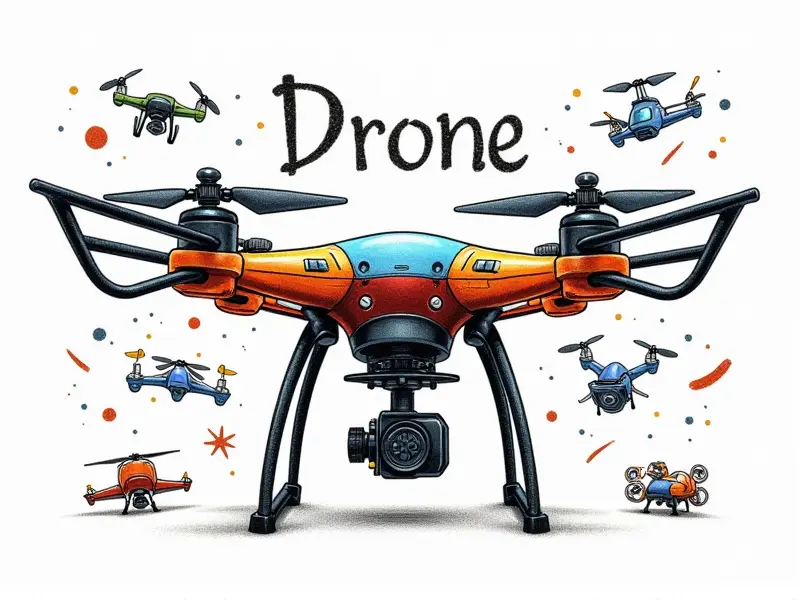Radio transmitter bandwidth

Understanding RC Frequency Bands
When diving into the world of radio-controlled (RC) models, one of the first concepts to grasp is frequency bands. These are specific ranges within the electromagnetic spectrum allocated for RC communication. Common frequency bands include 2.4GHz and 900MHz, each with its unique advantages and disadvantages.
The choice of frequency band significantly impacts your RC experience. For instance, the 2.4GHz band is popular due to its wide availability and lower interference from other devices. However, it can be more susceptible to signal degradation over longer distances or in dense urban environments compared to the less crowded but more expensive 900MHz band.
Maximizing Your RC Transmitter Range
To get the most out of your RC transmitter's range, consider several factors. First, ensure that you are using high-quality antennas and connectors designed for your specific frequency band. This minimizes signal loss and ensures a strong connection between your transmitter and receiver.
- Antenna Selection: Opt for directional or omnidirectional antennas depending on the environment and desired flight pattern.
- Connector Quality: Use high-quality, low-loss connectors to maintain signal integrity.
Boosting Signal Strength in FPV Racing
In first-person view (FPV) racing, where split-second decisions can mean the difference between victory and defeat, maximizing signal strength is crucial. Here are some tips:
- High-Gain Antennas: Utilize high-gain antennas to extend your range significantly.
- MIMO Technology: Multiple-input multiple-output (MIMO) systems can provide redundancy and improve signal quality.
Choosing the Right RC Transmitter Bandwidth
Selecting the appropriate bandwidth is essential for optimal performance. Bandwidth refers to the range of frequencies used by a transmitter, which directly affects data transmission speed and reliability.
- Narrow Band: Suitable for basic control functions but may lack in complex scenarios requiring high-speed data transfer.
- Broad Band: Ideal for advanced features like telemetry, video streaming, and multi-channel operation.
Common Issues with RC Transmitter Range
Several factors can reduce your transmitter's range. Understanding these issues helps in troubleshooting and enhancing performance:
- Interference: Other electronic devices operating on the same frequency band can disrupt signal transmission.
- Obstructions: Physical barriers like buildings, trees, or even water bodies can weaken signals.
Enhancing RC Communication Distance
To extend your communication range, consider these strategies:
- High Power Transmitters: Opt for transmitters with higher power output to reach further distances.
- Antenna Amplifiers: Use amplifiers to boost signal strength and overcome obstacles.
The Impact of Interference on RC Signals
Interference can severely degrade your RC experience. Common sources include Wi-Fi networks, cordless phones, and other RC devices operating in the same frequency band. Understanding these issues helps you mitigate their effects:
- Frequency Hopping: Implementing technology that rapidly switches between frequencies to avoid interference.
- Diversity Antennas: Using multiple antennas can improve signal reliability by providing redundancy and better coverage.
Optimal Settings for RC Transmitters
To achieve the best performance, fine-tuning your transmitter settings is crucial. This includes adjusting power levels, selecting appropriate data rates, and configuring frequency hopping if necessary:
- Data Rate Optimization: Balancing between high-speed data transfer and reliability.
- Power Level Adjustment: Increasing power can enhance range but may also increase interference susceptibility.
Understanding RC Signal Interference
Interference poses a significant challenge in RC communication. It disrupts signals, leading to lag and potential loss of control. Understanding the types and sources of interference is key:
- Electromagnetic Interference (EMI): Caused by electronic devices emitting electromagnetic waves.
- Radio Frequency Interference (RFI): Occurs when signals from other RF devices overlap with your RC frequency band.
How Bandwidth Affects Flight Stability
The bandwidth of your RC transmitter directly influences flight stability. Higher bandwidth allows for more frequent data transmission, improving responsiveness and reducing lag:
- Data Transmission Speed: Faster data rates ensure smoother control over the model.
- Error Correction: Advanced error correction techniques can maintain stability even under poor signal conditions.
Choosing the Right RC Frequency Band
Selecting an appropriate frequency band is critical for optimal performance. Consider factors such as intended use, environment, and potential sources of interference:
- 2.4GHz vs 900MHz: Weigh the benefits of each band based on your specific needs.
- Compatibility: Ensure that both transmitter and receiver are compatible with chosen frequencies.
Conclusion
In conclusion, understanding radio transmitter bandwidth is crucial for enhancing your RC experience. By selecting the right frequency band, maximizing range, boosting signal strength, and mitigating interference, you can achieve optimal performance in various scenarios. Whether you're a casual hobbyist or an FPV racer, these tips will help you get the most out of your equipment.

